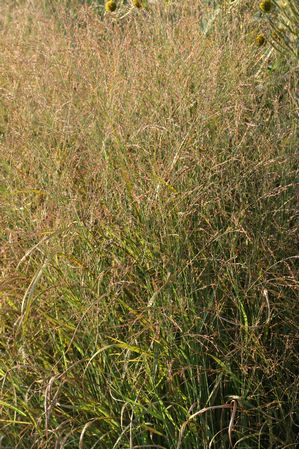
Panicum virgatum - panic grass
Panicum virgatum
Switchgrass
More About Switchgrass
Panicum virgatum, Panic grass, is a colonizing perennial grass that grows in large clumps 3-6' tall with sturdy, flat, glossy leaf blades. When used in prairies and bottomland sites, Panic grass develops long rhizomes that grow horizontally to interlace and form a thick, dense sod used for revegetation, restoration, and erosion control projects. Panic grass tolerates partial shade and is found in a range of moisture levels from dry, to mesic, to moist wet habitats. Panicum virgatum will handle spring flooding but not that of a persistent high water table. Provides thatch for ground nesting birds and is a great fall food source.
Bloom Color
YellowPanicum virgatum Characteristics & Attributes
|
Exposure
|
Mature Height
|
Spread Characteristics
|
Season of Interest (Flowering)
|
||||||||||||||||||||||||||||||||||||||||||
|
Season of Interest (Foliage)
|
Pond Zonation
|
Foliage Color
|
Wildlife Benefits
|
||||||||||||||||||||||||||||||||||||||||||
|
Critter Resistance
|
Wetland Indicator Status
|
Plant Type
|
Attributes
|
||||||||||||||||||||||||||||||||||||||||||
|
USDA Hardiness Zone
|
